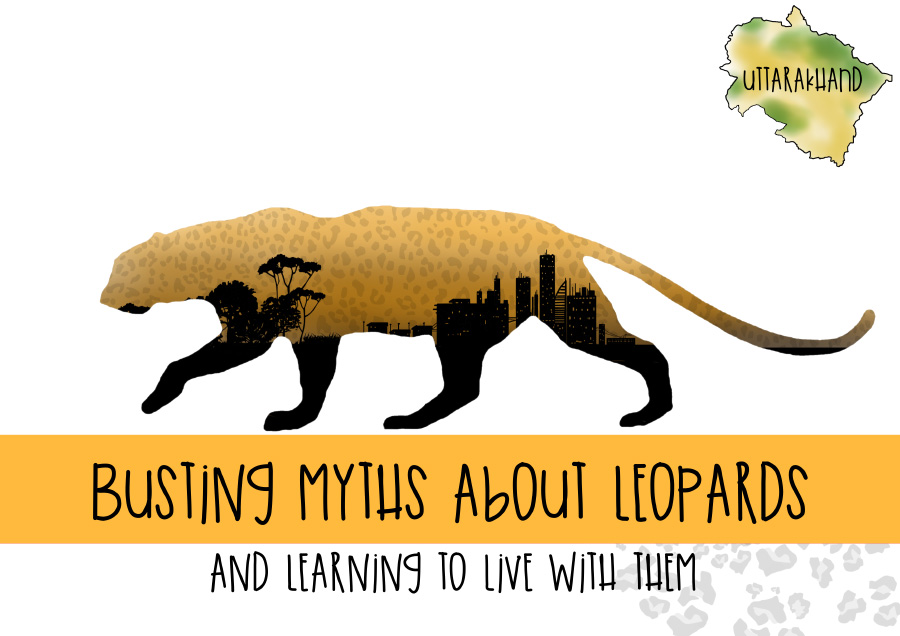“Leopard changes spots, strikes fear” blazed the headline of a leading daily in Dehradun. This, even as we were travelling to the interiors of Uttarakhand, to Tehri and Pauri, to conduct media workshops for sensitizing the “fourth estate”.
The Uttarakhand Forest Department, with support from WCS-India, and Titli Trust, Dehradun, has initiated pilot programs in Tehri and Pauri in Uttarakhand, to mitigate the leopard conflict; one of the most serious human-wildlife conflicts in this pristine hill state. The pilots include creation of Rapid Response Teams (RRTs) and an awareness program for all stakeholders about the need to find ways to mitigate the leopard conflict.
Two Rapid Response Teams (RRTs) of the Uttarakhand Forest Department have already been formed at Tehri and Pauri. To begin with, these RRTs were equipped with necessary equipment which ensures safety for the Forest Department staff and the leopard, as well as techniques to keep people safe during a rescue. The RRTs were trained by experienced staff from the Maharashtra Forest Department. Within a few months of the training, and a few successful leopard rescues, the Tehri RRT gets called in for leopard rescue assignments in other districts of Uttarakhand! In the media workshops conducted at Tehri (20 Dec 2017) and Pauri (22 Dec 2017), the RRTs showcased their equipment and capability for the media.
Attended by local print and electronic media, the key messaging to these crucial stakeholders at the media workshops was to undertake responsible reporting. A booklet titled “Busting myths about leopards…and learning to live with them” was distributed. The booklet, prepared in English and Hindi, highlighted that as leopards have always lived in human-dominated landscapes, and as we, humans, cannot change the leopard’s behaviour; perhaps an alternate approach was to modify human behaviour and habits for our own safety. Learning to live with leopards in human-dominated landscapes is crucial to reduce conflict.
The media shared their issues, too. Specific amongst these was that “bad news” and “negative press” sells, and that their own stories often get edited to showcase conflict “negatively”. Many myths around leopards and their behaviours were dispelled. Ranjeet Jadhav from Midday, Mumbai, who has significant experience in covering leopard conflict, was present as a resource person at the workshops. Ranjeet shared with the media how positive coverage of the conflict could actually make a difference to people’s lives on the ground, and assist to reduce conflict.
A mechanism to track the impact of these workshops is being planned. More workshops in other areas of Uttarakhand with high conflict is being considered, based on the positive feedback from the media. Hopefully, the “fourth estate” will “change their spots” and report responsibly about conflict!
The booklet “Busting myths about leopards … and learning to live with them” can be downloaded from the download section on the top right. Please contact the author if you need a hi-res print-ready version.


 CI is a non-profit, non-commercial portal that aims to facilitate wildlife and nature conservation by providing reliable information and the tools needed to campaign effectively.
CI is a non-profit, non-commercial portal that aims to facilitate wildlife and nature conservation by providing reliable information and the tools needed to campaign effectively.